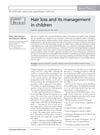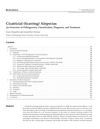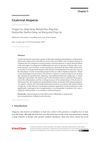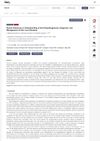Lichen Planopilaris-Like Changes Arising Within an Epidermal Nevus: Does This Case Suggest Clues to the Etiology of Lichen Planopilaris?
January 2000
in “
Journal of cutaneous medicine and surgery
”
TLDR Microorganism overgrowth and hyperkeratosis may trigger immune reactions causing lichen planopilaris.
The study presented a case of a 14-year-old black male with a congenital raised epidermal lesion on the scalp that developed into hair loss and verrucous skin changes. Histological analysis revealed features of an epidermal nevus with central characteristics of lichen planopilaris, along with marked hyperkeratosis and increased yeast and bacteria in the follicles. The findings suggested that overgrowth of microorganisms and hyperkeratosis might disrupt the immune privilege of hair follicles, leading to an immunologic reaction confined to the follicles, potentially providing insights into the etiology of lichen planopilaris.





